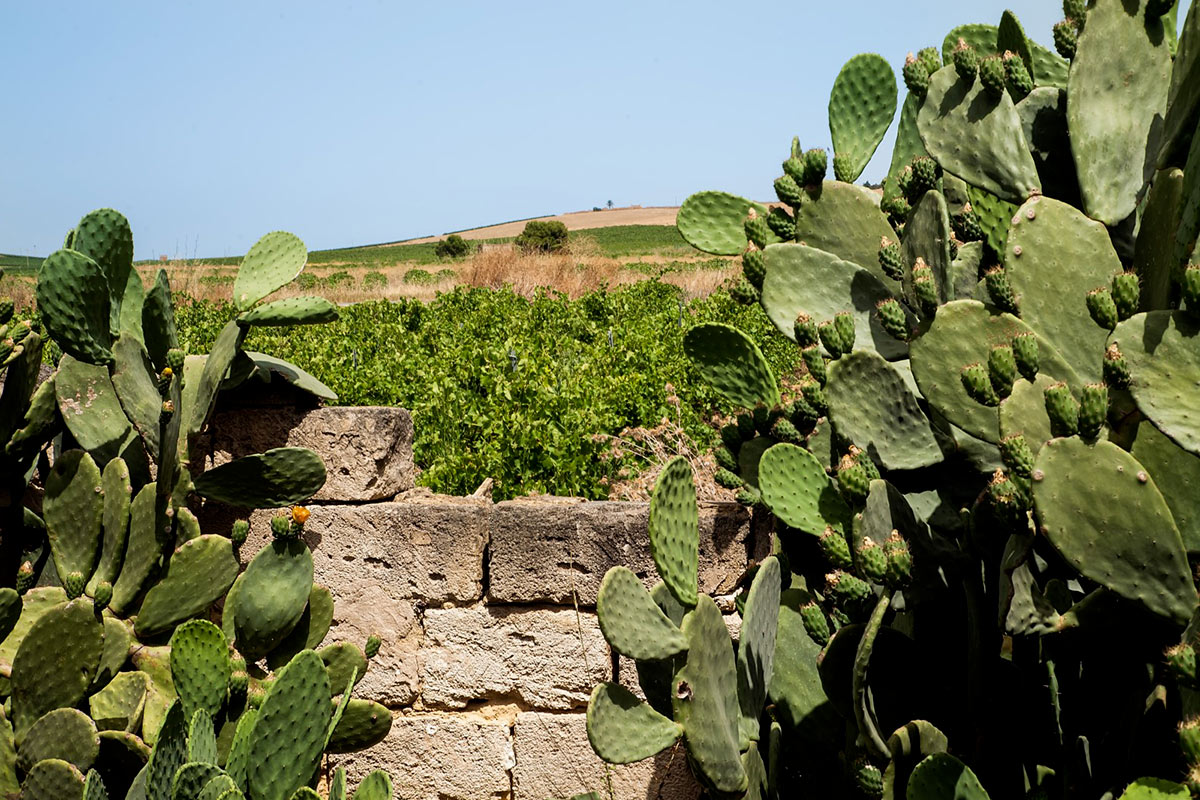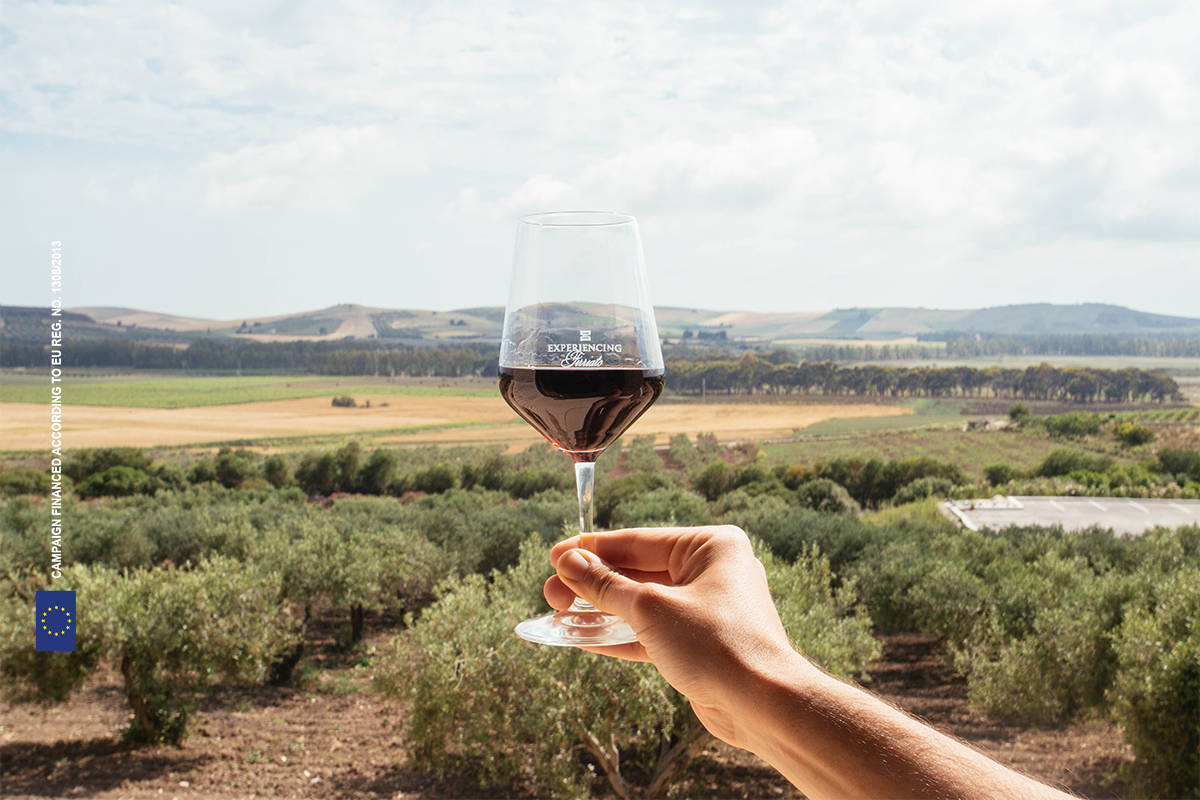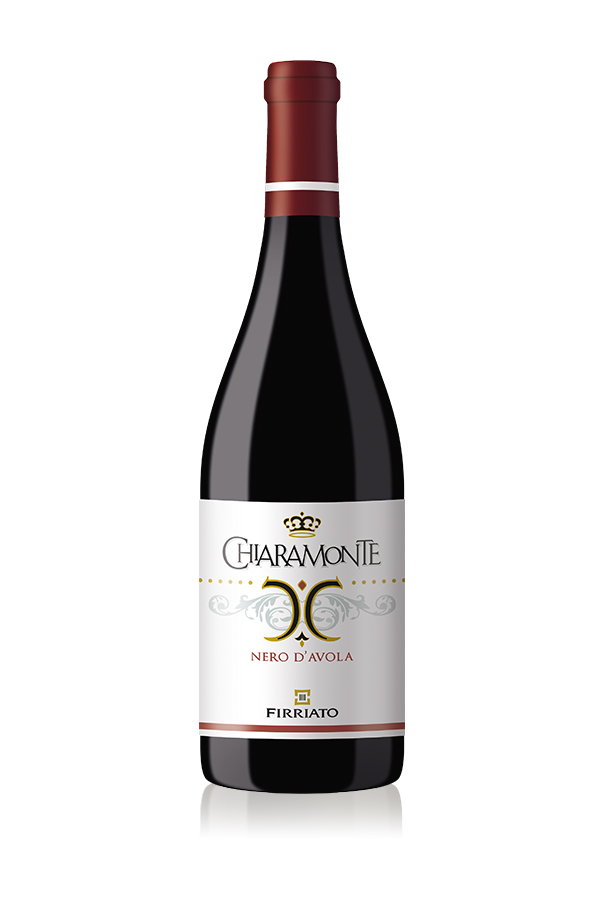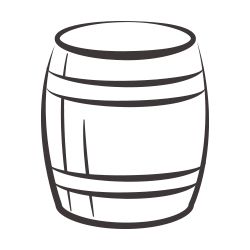The balance and strength of Nero d’Avola
CHIARAMONTE
DOC Sicilia
Nero d'Avola
This native Sicilian vine, by antonomasia, shines with a new light in this wine which fully embodies all the authentic properties of its fruit. It is a different interpretation of Nero d’Avola that evokes with personality all the aromatic qualities of the island’s most important red grape variety. The unique characteristics of the Dàgala Borromeo estate where this varietal is grown, lend themselves to shaping its modern structure and complex aromatic profile. Firriato’s research reaches its highest pinnacle here in the sandy loam, alluvial soils of this plain, with an attentive viticulture that fully reveals the great biodiversity of the Sicilian native vines’ heritage. Chiaramonte Nero d’Avola is one of the purest manifestations of this philosophy.
- Appellation: DOC Sicilia
- Vine: Nero d’Avola
- Terroir: hilly
- Soil: clayey soils with red marlstones presence
- Exposure: south (230 mt. a.s.l)
Production Area
Dàgala Borromeo

The fundamental feature of Dàgala Borromeo is the composition of its soils. It is a unique terroir which gives the wines grown in this area a structural complexity. This is thanks to the orographic and climatic uniqueness that distinguishes this area.

Chiaramonte Nero d'Avola
The symbol of Norman culture in Sicily
Palazzo Chiaramonte Steri has been a symbol of religious and political power over the centuries, and today is the standard bearer for culture in Sicily, as it is home to one of the oldest universities in Europe. It is in respect for this glorious past that this single varietal Nero d’Avola wine expresses its love for a land dedicated to vine growing. The precision and harmony of the forms of the Steri are perfectly reproduced in the glass in a wine that creates the perfect balance between the strength of the vine and balance in the winemaking process. This wine, like the noble Sicilian family, is taking the history of ‘Born in Sicily’ oenology to new heights, and with Firriato’s distinguishing class is rewriting some of the most beautiful and noble stories on Nero d’Avola, the world symbol of the island’s viticulture.
CHIARAMONTE NERO D'AVOLA
The characteristics of vintages
2020
During the 2020 wine year, the weather pattern underwent notable variations in contrast to the previous 2019. Temperatures, particularly during the winter months of January and February, were above the seasonal average, while a period of drought it lasted from May until late summer.
2018
2018 vintage in Trapani was characterized by frequent rains, and then stabilized during the final phase of grape ripening, with temperatures on average cooler than in 2017 and with good temperature variations between day and night.
2017
In 2017, the climate trend led to a regular vegeto-production cycle. At the beginning of summer, thanks to a good vegetative curve, the plants presented themselves in excellent phytosanitary conditions. Despite the temperature values above the seasonal averages recorded between July and August, the day / night temperature variations guaranteed a good aromatic and polyphenolic maturation. The bright ruby red wine, with hints of red fruit, spices and toasted notes is broad and complex, with very delicate and soft tannins.
2016
The summer season 2016 has been characterised by mild cimate, few rainfalls without excessive heat. After a winter characterised by few rainfalls, spring season began with cool temperatures lasted over flowering until the months of May and June when spring concluded with some rainfalls. These climatic conditions fostered a great vine life-cycle in the vineyard.
2015
Very complex in terms of weather, the heat and rain Fall 2014 resulted in the appearance of a significantly reduced spontaneous sward and characterized by the presence of species microthermal (those that adapt and grow at low temperatures). In late they turn out to be the most wild and cultivated plants seed. The start of winter was cold, with the strong reduction of sporigen due to the Spring 2015 greatly damp. This has lowered the microbial load start and a reduced ability of virulent pathogens in the early stages of their development (April).
2014
A Memorable vintage especially thanks to the uniform climate conditions: rainy spring and fresh summer ease slow and gradual ripeness. The particularity of summer is linked to the lack of Sirocco. July does not achieve heat peaks. At the same time marked temperature fluctuations between day and night concern all Firriato’s estates triggering aromas and fragrances development. All the mentioned elements contribute to slow and balanced ripeness of fruits. Slow phenolic ripeness triggered greater aromatic complexity together with polyphenolic stability that underlines the long ageing-orientation of the wine.
2013
The vintage looks fruitful, both in quantity and especially in quality were obtained “wines of interesting profile”. Because of the climate the gathering lasted until the last week of September. The year 2013 has enabled a slower collection and then a gradual maturity: the harvest was delayed by two weeks.
2012
The run of vines growing season, during the flowering and fruit setting, has been pretty regular. Anomalies during veraison and ripening phases were not present. The harvest of white, early varieties, has started earlier than the previous year. Lucifer, Charon and this summer’s other African anticyclones have been a blessing for the vintage, “an exceptional year regarding the quality”. This year the warm weather anticipated the harvest start, the high temperatures did definitely enhance the quality of the wines we shall drink: warm weather causes a dehydration of grapes.
2011
The rainfall this year was lower compared to average rainfall values for Sicily and mainly occurred during the spring. The cool temperatures and scarce rainfall had a significant effect on the harvest, which began in the last third of September, with a slightly lower yield of grapes. Although the yield was slightly lower than usual, the fruit was ripe and had developed an excellent flavour thanks to the considerable differences in temperature between day and night that were seen from the second half of August.


CHIARAMONTE NERO D'AVOLA
Awards
2018
James Suckling: Top One Hundred
International Wine Report: 93 pts
James Suckling: 94 pts
2017
International Wine Report: 93 pts
James Suckling: 94 pts
2016
Falstaff: 90 pts
2015
James Suckling: 93 pts
Wine International report: 92 pts
Wine Spectator: 88 pts
Decanter: 87 pts
2014
Robert Parker: 90 pts.
The Tasting Panel Magazine: 89 pts
2013
Robert Parker Wine Advocate: 88 pts.
OscarBerebene – Gambero Rosso
2012
Wine Spectator: 88 pts.
2011
Vini D’Italia – Gambero Rosso: 2 black glasses
Annuario dei Migliori Vini Italiani – LM Luca Maroni: 89 pts
Berebenelowcost – Gambero Rosso (quality price award)
2010
Annuario dei Migliori Vini Italiani – LM Luca Maroni: 88 pts.
Robert Parker: 88 pts.
2009
Vini D’Italia – Gambero Rosso: 2 black glasses
Annuario dei Migliori Vini Italiani – LM Luca Maroni : 90 pts . The best producer of the year
AIS Bibenda: 3 clusters
Berebenelowcost – Gambero Rosso (quality price award)
2008
Vini D’Italia – Gambero Rosso: 2 black glasses
Bibenda: 3 clusters
Wine Enthusiast: 88 pts.
Sélectionsmondialesdesvins Canada: Silver Medal
2006
Los Angeles International Wine &SpiritsCompetition: Silver Medal
WineSpectator:88 pts.
Paired with
Busiata alla Trapanese on Erice's Pesto
Blanch tomatoes in small pot of boiling water. Peel them and chop into quarters. Remove the seeds and drain them while getting other ingredients together. Finely grind the pinoli with the garlic.



















